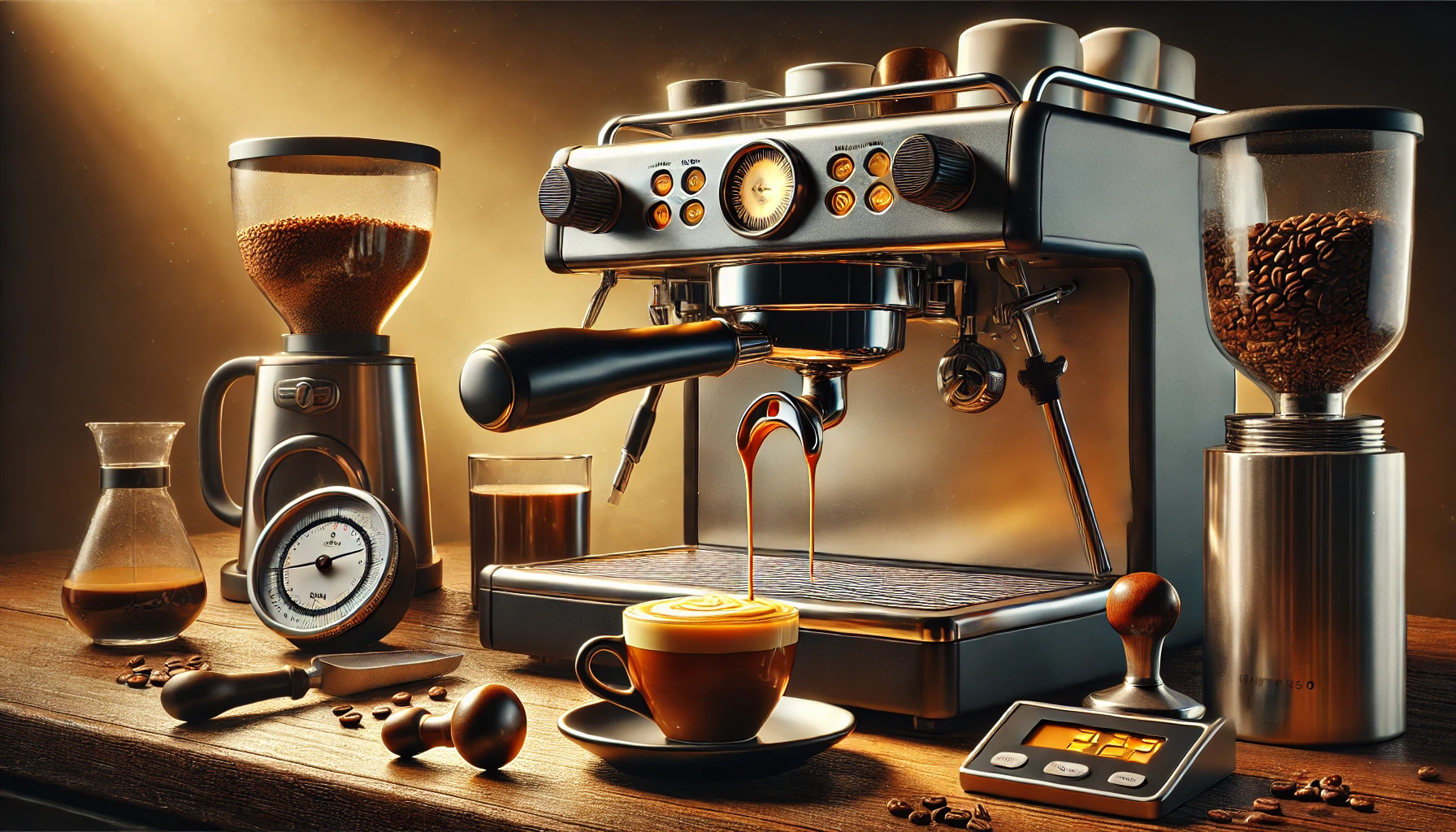Espresso is more than just a type of coffee—it’s a brewing method defined by precision, pressure, and balance. While it forms the base of popular drinks like lattes, cappuccinos, and macchiatos, a straight espresso shot is a concentrated celebration of flavor, aroma, and mouthfeel.
In this guide, you’ll learn how to pull the perfect shot of espresso at home, whether you’re using a semi-automatic machine or just getting started with espresso brewing.
What Is Espresso?
Espresso is a method of brewing coffee by forcing hot water under high pressure (around 9 bars) through a compact puck of finely ground coffee.
Key characteristics of espresso:
- Brewed in 25–35 seconds
- Uses 18–20g of ground coffee for a double shot
- Yields 30–40ml of liquid
- Topped with a layer of crema (golden foam from emulsified oils)
- Rich, intense, and balanced in flavor
Espresso is the foundation of most café drinks and mastering it opens the door to a whole world of coffee possibilities.
What You’ll Need
- Espresso machine (semi-automatic, manual, or automatic)
- Burr grinder (for consistent fine grind)
- Fresh coffee beans (espresso roast or specialty-grade beans)
- Tamper (flat and well-fitted to your portafilter)
- Scale and timer (for precision)
- Portafilter and basket
Optional but helpful:
- Bottomless portafilter (to see your shot’s flow)
- WDT tool (for even distribution of coffee grounds)
- Shot mirror or light (to examine the pour)
Choosing the Right Coffee
Look for beans labeled “espresso roast” or medium to dark roasts with notes like chocolate, nuts, caramel, or spice.
However, light roasts can also work for espresso if you enjoy bright acidity and are comfortable adjusting grind and pressure.
Always use freshly roasted coffee, ideally within 7–21 days of roast date.
Step-by-Step: How to Pull an Espresso Shot
1. Preheat Your Equipment
- Turn on your machine and let it warm up (at least 15 minutes)
- Run a shot of hot water through the group head to heat the portafilter
2. Dose and Grind
- Weigh 18–20 grams of whole beans for a double shot
- Grind finely—texture should be like table salt
- Distribute grounds evenly in the portafilter (use finger swipe or WDT tool)
3. Tamp Evenly
- Use a tamper to apply firm, level pressure (around 30 lbs)
- Ensure the puck is flat and compact to allow even water flow
4. Lock in and Brew
- Insert the portafilter into the machine and start the shot immediately
- Time your shot: aim for 25–35 seconds for 30–40ml yield
- Watch for a steady, golden-brown stream with tiger striping in the crema
5. Evaluate the Shot
Good espresso should have:
- Crema: Golden layer, not too thick or too thin
- Body: Full, syrupy texture
- Balance: Harmony of sweetness, acidity, and bitterness
- Finish: Pleasant aftertaste with lingering complexity
Espresso Troubleshooting Guide
| Issue | Likely Cause | Solution |
|---|---|---|
| Sour or weak shot | Under-extracted | Finer grind, longer shot, increase dose |
| Bitter or dry shot | Over-extracted | Coarser grind, shorter shot, reduce dose |
| Uneven flow or channeling | Poor tamp or uneven distribution | Use WDT tool, improve tamping |
| No crema | Stale beans or low pressure | Use fresh beans, check machine pressure |
Espresso is sensitive to tiny changes—small tweaks can have big effects.
Cleaning and Maintenance
A clean machine is essential for great espresso:
- Purge group head before and after each shot
- Rinse portafilter and basket after every use
- Backflush with water daily (and with cleaner weekly)
- Descale machine every few months, depending on water hardness
Keeping your equipment clean preserves flavor and extends its lifespan.
Dialing In Your Shot
“Dialing in” means adjusting your grind, dose, and time to achieve your ideal espresso shot. It may take a few tries with each new bag of beans.
Tips:
- Start with a 1:2 ratio (e.g., 18g in, 36g out)
- Taste and take notes—every adjustment brings you closer to balance
- Keep variables consistent except the one you’re testing
Final Thoughts: The Art of Pressure and Precision
Espresso is as much science as it is art. It requires focus, consistency, and patience—but the reward is a small cup packed with complexity, aroma, and satisfaction.
Once you master the basics, you can explore milk steaming, advanced recipes, and espresso-based drinks like macchiatos, cortados, and flat whites.
So fire up your machine, grind fresh beans, and start pulling your perfect shot—because espresso is not just coffee, it’s a craft.
